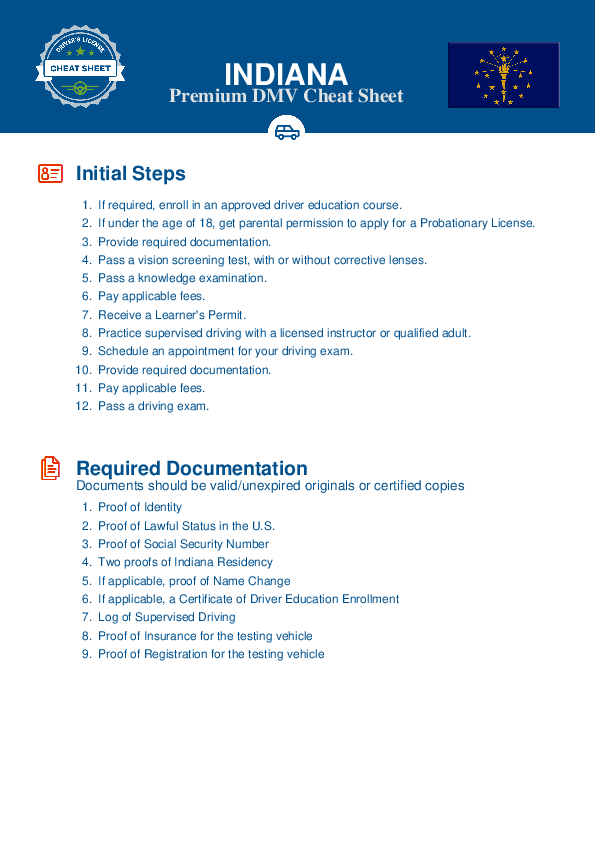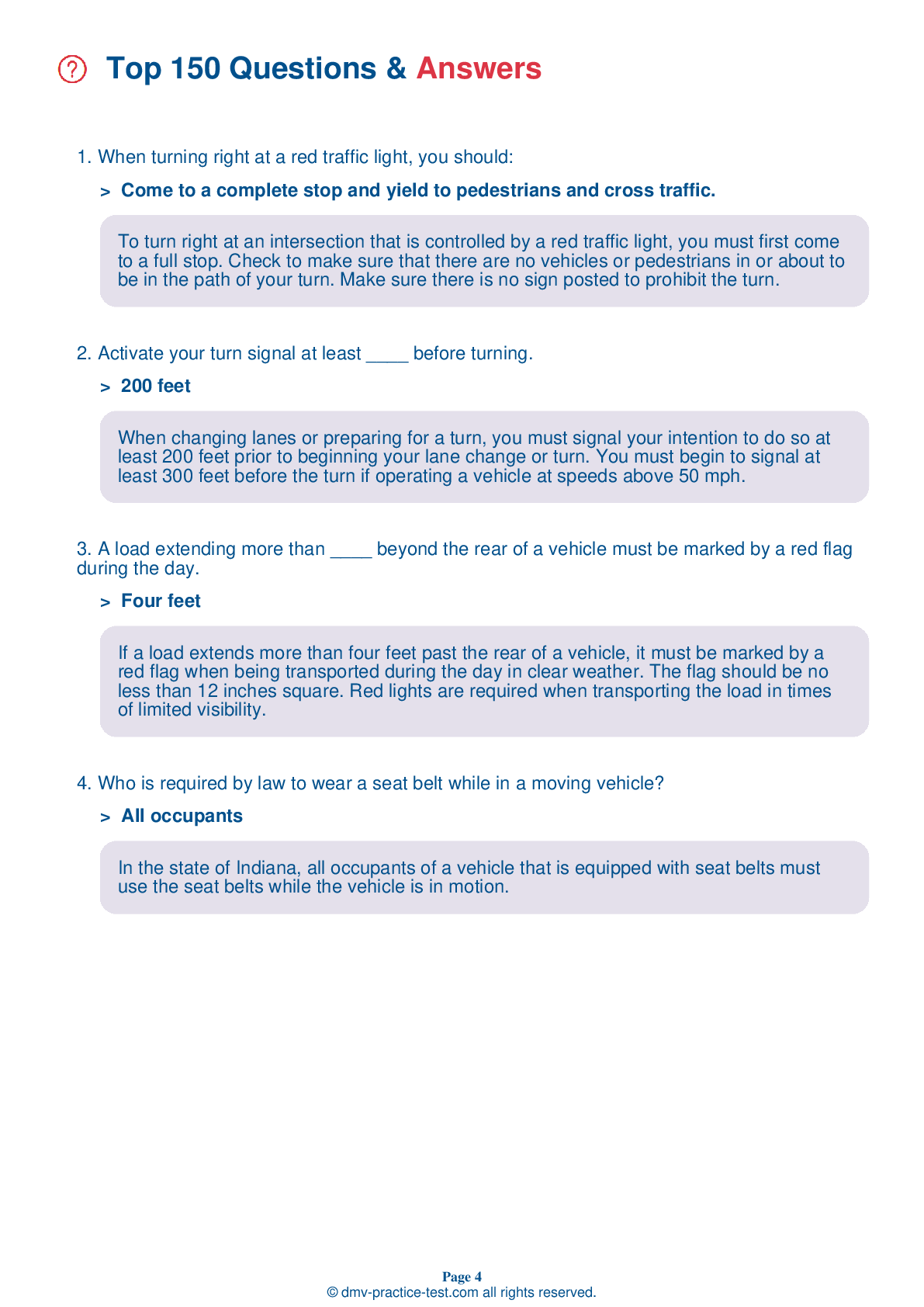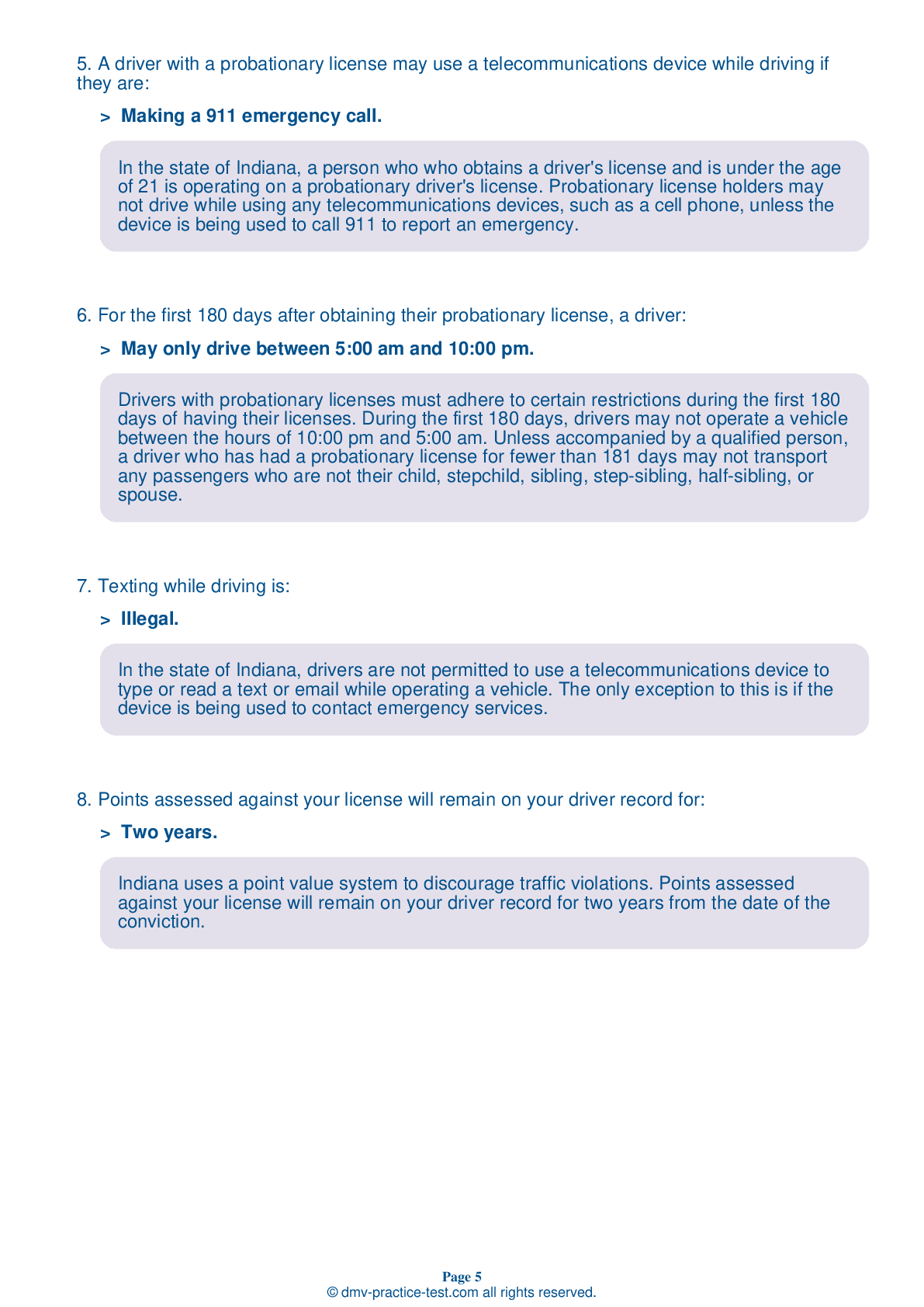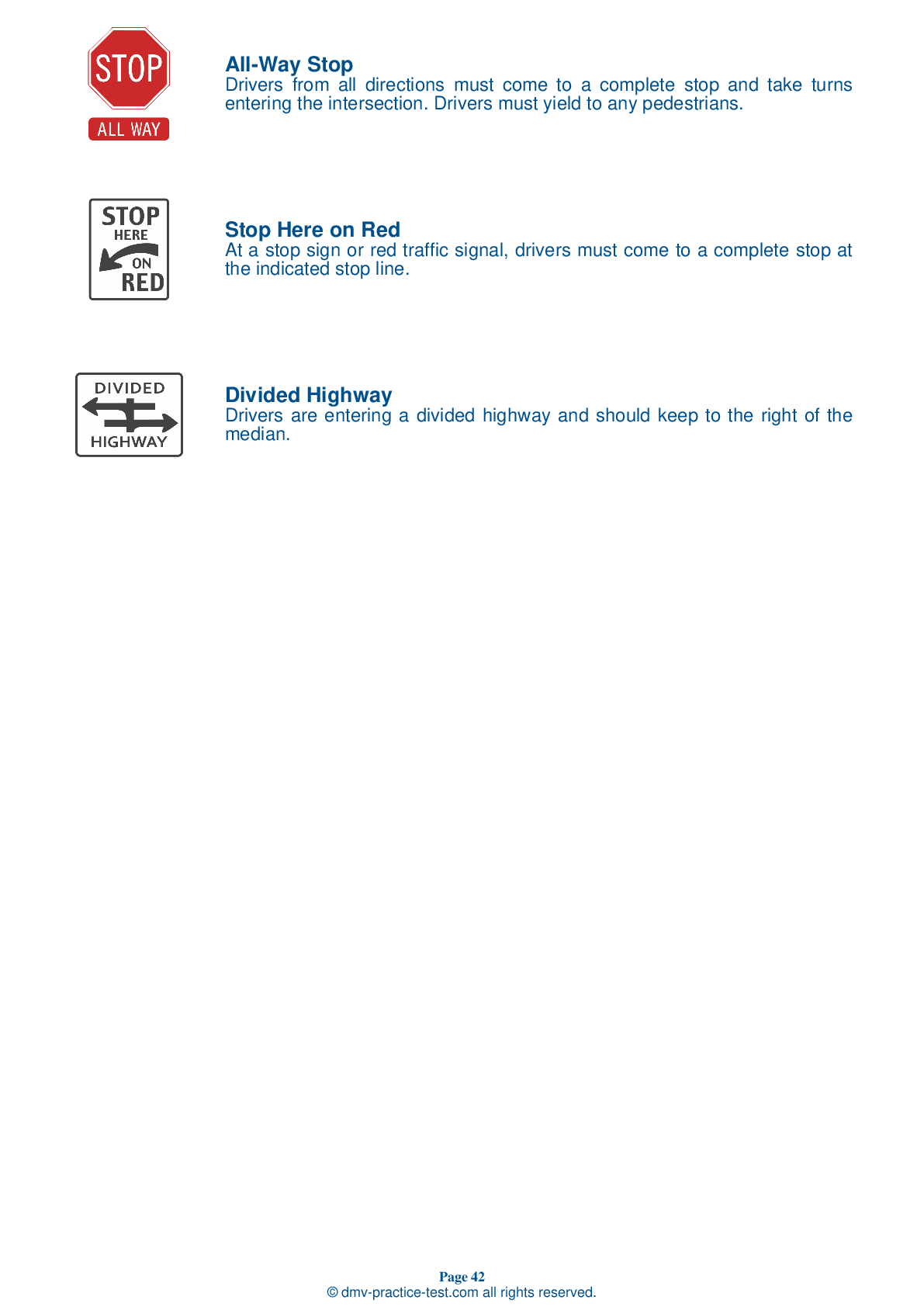FREE Indiana DMV Practice Test #4 Page 5 of 5
This set of Indiana DMV practise tests has been updated for January 2025. It includes questions based on the Indiana Driver Handbook's most significant traffic signals and laws for 2025. Use actual questions that are very similar (often identical!) to the DMV driving permit test and driver's licence exam to study for the DMV driving permit test and driver's licence exam.
On the practise exam, each question gets a tip and explanation to help you remember the concepts. The written component of the official Indiana DMV test will include questions about traffic rules, traffic signs, and driving statutes, as well as information from the Driver Handbook.
To obtain a passing grade, you must correctly answer 44 of the 50 questions. Take our DMV practise exam to help you prepare for your Indiana instruction permit or driver's licence.
The DMV exam is available in several languages.
Using any kind of testing assistance will result in an automatic fail, and the DMV may take additional action against your driver's licence, so stay away from it.
39 . What are the colors of warning signs indicating upcoming hazards?
Warning signs that indicate approaching hazards are usually yellow with black lettering or symbols. Warning signs in work zones are orange with black lettering or symbols.
40 . If you begin to feel tired while driving, the best thing to do is to:
Being fatigued while driving is similar in danger to driving under the influence of alcohol. If you begin to feel tired while driving, the best thing to do is to stop driving.
41 . You should honk your horn when you:
Your horn should be used as a warning in situations where you think another driver or a pedestrian does not see you. For example, if a child begins to run into the street in front of your vehicle, you should sound your horn.
42 . This sign means:
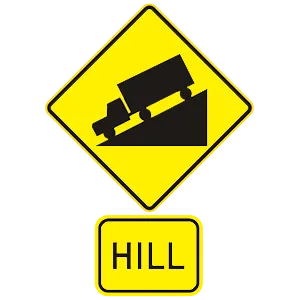
Warning signs are usually diamond-shaped with black markings on a yellow background. They alert drivers to upcoming hazards. This sign indicates that drivers are approaching a steep hill and should prepare to adjust their speeds to continue to drive safely.
43 . If you need to slow down while driving on a slippery road, the first thing you should do is:
To slow down on a slippery road, you should first take your foot off the gas pedal. If you need to slow down even more, gently apply a slow, steady pressure to your brake pedal.
44 . You may not cross a single broken white or yellow line:
You may cross a single broken line to pass or change lanes as long as you can do so safely and without interfering with traffic.
45 . When you are in a line of traffic that is crossing a railroad track that has no signals or gates:
If you are following another vehicle at a railroad crossing, check to make sure you have enough room to get all the way across before you drive onto the tracks. You should never try to pass another vehicle as you approach or cross a railroad crossing. Always check for trains before crossing any railroad tracks.
46 . When you park uphill on a street with a curb:
When parking on an incline where there is a curb, you should turn your wheels sharply to the left, away from the curb. This way, if your brakes fail, your vehicle will not roll into traffic.
47 . This sign means:

